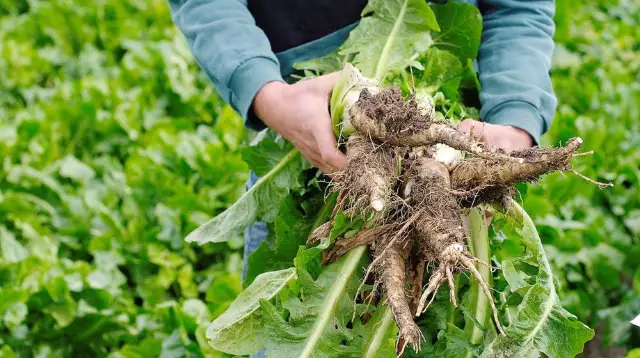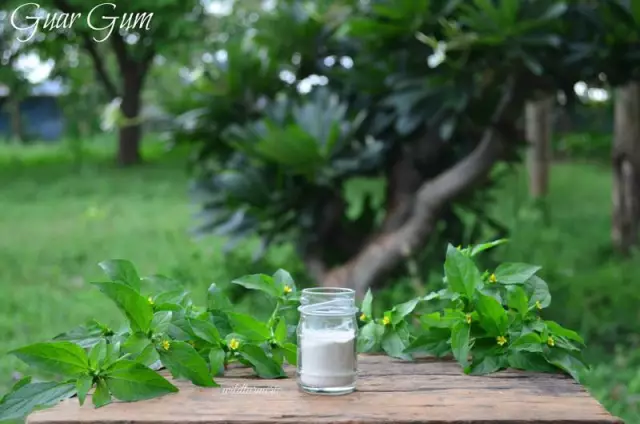- Author Rachel Wainwright [email protected].
- Public 2023-12-15 07:39.
- Last modified 2025-11-02 20:14.
Fat
Lard is animal fat that is deposited under the skin in the abdominal cavity. Functionally, it is the animal's nutritional reserve and consists mainly of triglycerides. It also contains many saturated fatty acid residues.

They eat lard in fresh, boiled, smoked form. Salted and salted-smoked lard is also popular, which is called "lard".
Calorie fat
The calorie content of fat is quite high - about 770-810 calories per 100 g. This is the main reason that many women choose not to eat it at all.
A bit of history
I wonder who started eating lard first? It is generally accepted that it is a Ukrainian national product, but is it so? It turns out that other peoples have known about lard since ancient times. For example, in Armenian sources dated to the 7th century BC. you can find a mention of this food product. In ancient China, pigs were also raised, and to this day they like to eat lard and pork there. Nevertheless, Italy, or rather, Ancient Rome, can be considered its real homeland. In Rome there were many slaves who had to be fed with something, and lard is just a very satisfying and inexpensive food.
For many centuries, lard was considered the food of the poor, and meat was the lot of the rich. Since lard had to be stored, people learned how to properly harvest it, freeze it, smoke it, cook salted lard. They began to cook various dishes with it, and each nation can find its own recipes with the addition of this food product: Ukrainians, Czechs, Poles, Englishmen, Russians, Germans, Americans and Belarusians. For Muslims, pork is considered an unclean product, therefore, it is not eaten. If you think about it, you can find practical roots in this - due to the hot climate, storing fat in these countries has always been problematic.
In Russia, since the 13th century, lard has become one of the main food products. In these troubled times, the Mongols came to Russia, who collected an extremely high tribute from the people. This applied to everything, and food and living things in the house. They only did not touch the pigs - because of their short legs it was difficult to drive them.
In the Ukrainian, Belarusian and Russian villages, lard has always been respected and loved: with onions and black bread, radish, horseradish and mustard, it was always convenient to take it with you to work, hunting or fishing. Not a single feast was also complete without lard. It is known that it prevents rapid intoxication and, together with alcohol from lard, the fats contained in it are perfectly absorbed.
Composition
Despite the high calorie content of pork fat, its composition contains useful substances in such combinations that it is absorbed by the body much easier than butter. It contains about 88% of valuable animal fats, which contain saturated and unsaturated fatty acids, cholesterol. Also present are proteins and vitamins A, E, D, C, B, PP and minerals such as magnesium, phosphorus, potassium, sodium, zinc, iron, selenium, manganese, copper, calcium.
Lard contains a lot of arachidonic acid, which is so necessary for a person for the normal functioning of many organs and the production of important hormones. With a lack of it, a person often has inflammatory processes. That is why doctors believe that the use of fat, first of all, lies in the presence of arachidonic acid in it. It is not contained in vegetable products, and in butter it is almost 10 times less than in lard.
Also, the benefit of lard lies in such unsaturated fatty acids contained in it: linolenic, oleic, linoleic, so that for beauty and health, this food product is much more useful than the highest quality sausages.
Pork lard treatment
Unsalted and salted bacon has long been successfully used in cooking. But besides this, it is successfully used in folk medicine for the prevention and treatment of many diseases.
Use lard for colds. For bronchitis, for example, a mixture is prepared, consisting of a decoction of marshmallow root and interior lard. Legs and hands with colds, pain in joints are rubbed with pork lard.
To stop the inflammatory process in mastitis, thin slices of old fat are applied to the chest. It is also an effective remedy for weeping eczema. To do this, prepare the following mixture: 2 tbsp. unsalted melted lard, 2 egg whites, 1 liter of celandine juice and 100 g of chopped nightshade herb. The resulting mixture must be insisted for three days before use, after which the affected areas can be lubricated.
It helps fat to recover from serious illness, especially when exhausted. To do this, prepare the following mixture: 2 tbsp. honey, 1 tbsp butter and 1 tbsp. lard melted in a water bath.
Hard-healing wounds are treated with a mixture of beeswax and unsalted ghee. And with varicose veins in the early stages, the use of fat helps to stop the disease.
For heel spurs, a mixture of vinegar essence, raw egg and unsalted lard helps. It also helps with pain in the teeth. To do this, simply put a slice of salted fat between the aching tooth and the gum.
In addition, it is believed that lard is an excellent prophylactic agent against cancer, as it helps to eliminate toxins and radionuclides from the body.

Lard harm
Along with the numerous beneficial properties of lard, a number of its harmful qualities can be distinguished.
First, the harm of fat is that you can gain weight very quickly from it. After all, our daily diet consists not only of lard, but also of other products, so there is a risk of consuming much more fat and calories than necessary. The daily norm of fat is no more than 50 g.
In addition, if safety rules are not followed when preparing it, then the harm of fat becomes obvious, since there is a high probability of infection with parasites.
Has fat and a number of contraindications. So, for example, it is contraindicated to use it for patients with pancreatitis and cholecystitis, since the disease can worsen.
YouTube video related to the article:
Found a mistake in the text? Select it and press Ctrl + Enter.






